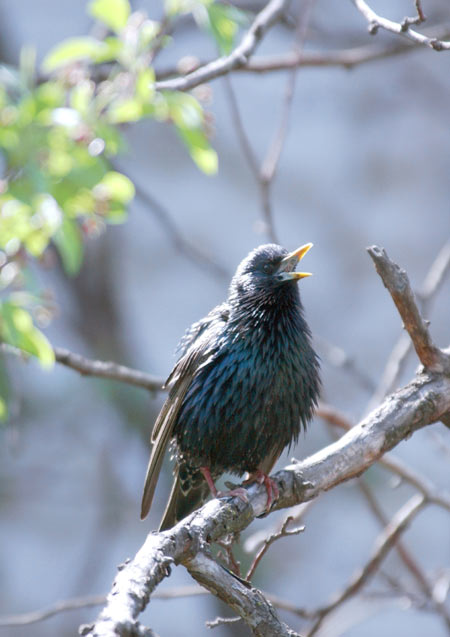Chomsky Challenge: Bird Said to Grasp Key Aspect of Human Language

Noam Chomsky has endured many attempts to disprove his widely respected theories of language, but never have any of them come from a 3-ounce bird.
The European starling, a tiny virtuoso, has the ability to learn and recognize a feature of grammar that has long been thought to be unique to human languages, researchers report in a new study.
Chomsky isn't buying it, however.
What humans can do
A common characteristic of human grammar is inserting words and clauses within a sentence, without limit. For example, "Oedipus ruled Thebes" can become "Oedipus, who killed his father, ruled Thebes" or "Oedipus, who killed his father, whom he met on the road from Delphi, ruled Thebes," ad infinitum.
More simply stated, you can insert as many brackets as you want within a sentence as long as there are as many brackets on the right as there are on the left.
Chomskian linguists believe that this characteristic, known as recursive center embedding, is a universal feature of human language, and the ability to process it forms the core of human language ability.
Sign up for the Live Science daily newsletter now
Get the world’s most fascinating discoveries delivered straight to your inbox.
"Our research is a refutation of the canonical position that what makes human language unique is a singular ability to comprehend these kinds of patterns," said the leader of the new study, Timothy Gentner of the University of California at San Diego.
How the study was done
Gentner and colleagues generated 16 artificial starling songs, which followed two different patterns. Similar to human grammar, the first set allowed for a sound to be inserted in the middle of a song, a simple form of recursive center embedding.
The next set of eight songs followed the finite state rule, whereby a sound could only be added at the beginning or end, a type of structure attributed to non-human communications.
After more than 10,000 trials, nine birds eventually learned how to distinguish the patterns of the two songs.
To see if the birds could use the same rules to distinguish patterns of longer pieces, the researchers then subjected the birds to longer strings of song. And the birds were able to make the distinctions. This suggests that the starling has to have memory and some recognition of pattern, explained study team member Howard Nusbaum from the University of Chicago.
While the new findings, reported in the April 27 issue of the journal Nature, might suggest that humans and some animals share basic levels of pattern recognition, many levels of linguistic complexity may not be described in this research.
Chomsky not convinced
"The article is based on an elementary mathematical error," said Chomsky, professor of linguistics at Massachusetts Institute of Technology. "They are overlooking the fact that there are many intermediate systems that are ignored in mathematical linguistics because their properties are empirically irrelevant."
Based on other work done 50 years ago by George Miller, Chomsky thinks further research would show that the birds are not grasping linguistics in the way the new study concludes.
"It has nothing remotely to do with language; probably just with short-term memory," Chomsky told LiveScience.
The ability for the starlings to sort through the patterns may also just be a benefit of natural selection, a process responsible for the origin of new species and the adaptation of organisms to their environments, as proposed by Charles Darwin.
"That aside, if someone could show that other animals had the basic property of human language, it would be of very little interest to the biology of language, but would be a puzzle for general biology," Chomsky said. "It's expected that if a species has some ability that has real selectional advantage, it will use it."











